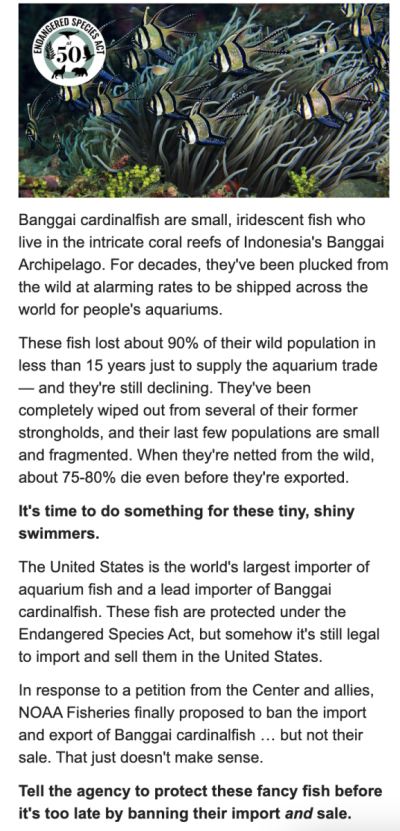In the late 2000s, most wild imports of Banggai Cardinalfish I saw had close to complete mortality. They all seemed to exhibit the same symptoms very soon after import: The fish would stop eating, their fecal material would turn white, and then the fins would clamp. Soon after, the slime coat would slough off, and the fish would be dead quickly after that. However, today I am seeing wild shipments that have close to 100% survival rates, even months after import for trackable specimens. The mortality I do see does not display the symptoms mentioned above. I have been to several facilities that buy large quantities of Banggai Cardinalfish. A couple of these facilities are retailers that quarantine their fish for several weeks, and even after the quarantine period, they are buying in quantities in which, despite the sell through, many individuals in a batch are there for several months post import. While obviously the value of these anecdotes has limits, it is noteworthy and there is no doubt something has happened that is decreasing mortality. I'm not sure if this is a result of the training done in Indonesia by LINI to improve fish collection and handling practices, increased sourcing from introduced populations closer to export centers, changes in the path through the supply chain from the Banggai Islands, better biosecurity measures pre-export, evolution of BCI, an unknown factor, or a mixture of several factors, but something has definitely changed. While I would love to know exactly what is going on here, most Banggai Cardinalfish research is currently focused on the state of the species in its endemic range, and for good reason, so I'm not sure we'll get that answer anytime soon.
But that's not actual data unless you kept records - date in, date out, etc. Every fish has "complete mortality" unless a time frame is applied to it.
I've looked at the data I have and cannot see any evidence that survivorship has improved in the past 25 years. I ran a trendline and it is downward. You can clearly see a time of dismal mortality, but it never rose back up.
I'm not prepared to say this is due to a virus, since no testing was done, but I will say that the mortality of this species is unacceptably low compared to what it once was, except for domestically raised fish.
I can't run much data for my own facility, as we manage the population as a "group" with births and deaths mixing and then just doing a yearly census. However, I was able to extract the first group that I bought when they appeared in the trade. In May of 1996, I acquired six wild caught fish. Longevity ranged from 1.3 to 3.6 years with an average of 2.9 years. That's compared to 1.8 years for the later aggregate data. Something is at work here.....
Jay
Last edited:





















